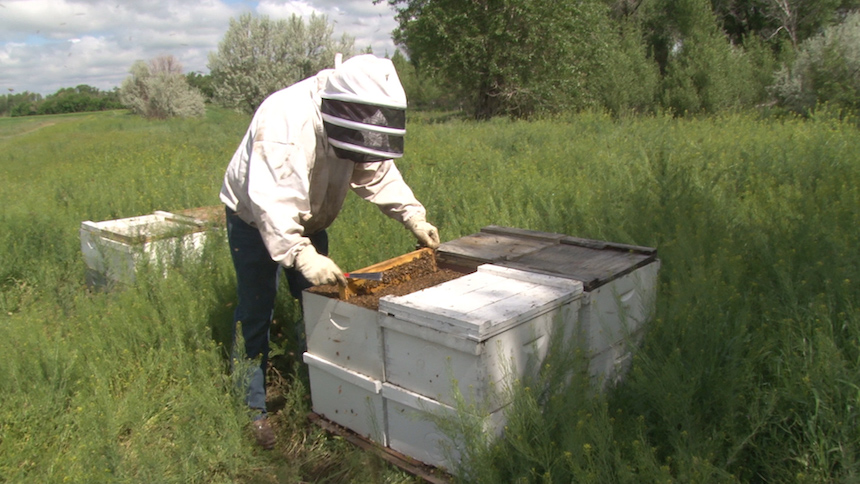Where have all the bees gone?
Published at | Updated atUCON — Imagine living in a world without honey, without apples, without almonds and without many of your other favorite treats.
Many plants rely on bees and other pollinators to produce some of nature’s most nutritious and beloved foods. It’s estimated that bees pollinate 80 percent of the world’s plants, including 90 different food crops. In fact, bees have something to do with one out of every three to four bites of food you eat.
But the honeybee population in eastern Idaho has changed over the years and beekeepers are facing obstacles when it comes to keeping their bees alive.

“It definitely has its challenges,” beekeeper David Dance tells EastIdahoNews.com. “We suffer bee losses from our average of 25 percent and we’ve suffered losses as high as 50 percent one year.”
That may not seem like a big deal but imagine if a cattle farmer lost 25 to 50 percent of his herd every year.
Dance and his workers are constantly trying to come up with ways to keep their bees alive.
“The biggest factor, I think, is a lack of forage for the bees,” he says. “Everybody’s spraying weeds, and everybody sprays their crops, (for) which we certainly don’t blame them. I would too if I had crops. But we do run into a lack of forage for the bees and overall good nutrition for the bees.”
Between 2016 and 2017, beekeepers across the United States lost 33 percent of their colonies, according to a study by the University of Maryland.
One of the biggest problems? A tiny lethal parasite called the varroa mite that spreads easily between colonies.
“It’s the size of a pinhead and attaches itself to the bee and actually sucks the bee’s blood,” bee expert Ward Hicks says. “It delivers viruses to the honeybee, and that’s created a problem for the beekeepers to manage.”
Dance, who is the owner of Rocky Mountain Honey, has bees that are used in several places in the western United States. At the beginning of the year, the insects are in California where they pollinate almonds. Then they go to Washington, where they pollinate apples, then go home to east Idaho.
“Each hive has one queen, and she puts off a pheromone. All her offspring are dedicated to that specific pheromone and every day the worker bees will go out, forage for nectar or pollen and, because of her pheromone, they return to that specific hive every night,” Dance says.

Some simple things you can do to help keep the bee population in eastern Idaho healthy include:
- Planting herbs, wildflowers, bushes and fruit trees in your yard.
- Buying honey from local beekeepers.
- Being mindful of when you spray pesticides and follow the instructions on the bottle.
And, if a honeybee is buzzing near you, don’t swat at it. Leave it alone because it may be on its way to pollinating one of your favorite foods.
“They’re only going to get mad if you start swatting at them, so just stand still,” Dance says.


